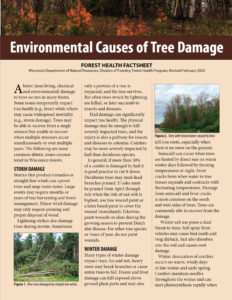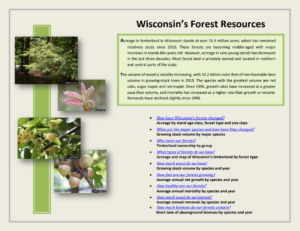By Jeremiah Auer, Forest Regeneration Specialist, (715) 459-1999
Winter hasn’t quite let loose its snowy grip from the Wilson State Nursery fields in Boscobel, but spring will be here soon and it won’t take long for the frost to leave the ground. Staff in the DNR reforestation program have already begun readying themselves to harvest seedlings.
For those who have spent parts of the winter planning to improve their properties, we still have plenty of seedlings available to create and enhance wildlife habitat, stabilize the soil, block winter wind and snow and provide a future shady spot to sit and enjoy a morning.
Conifers available include jack pine and white spruce. Both are great for providing thermal cover to wildlife in the winter and privacy along a property line. Jack pine grows fast and in some of the most inhospitable sites in the state. Spruce tends to grow slowly but produces a dense hedge for critters.
Hardwoods include aspen, river, white and yellow birch, black cherry, silver maple, red, white and bur oaks and black walnut. Many of these hardwoods provide forage or mast for wildlife (or even humans!) and grow quickly in our fertile soils. Black cherry will begin producing fruit as soon as 5 years and aspen and birch will provide buds for grouse even faster.
Consider talking to a local forester to get more information on tree planting and forest management. A good planting plan can focus your efforts and create a strategy to achieve your property goals. Find the contact information for your local DNR forester on the DNR website (enter keyword “Forestry Assistance Locator”).
Contact our nursery hotline at (715) 424-3700 for up-to-date information on seedling availability and to place an order.
Seedlings sold by the Wisconsin State nurseries are to be used for reforestation, wildlife habitat and windbreak and erosion control purposes and must be planted in Wisconsin. Answers to the most common questions are available on the “Frequently Asked Questions” page.
 The DNR Forest Health team recently updated its factsheet on common forms of abiotic (non-living, chemical and environmental) damage to trees in Wisconsin.
The DNR Forest Health team recently updated its factsheet on common forms of abiotic (non-living, chemical and environmental) damage to trees in Wisconsin. 
